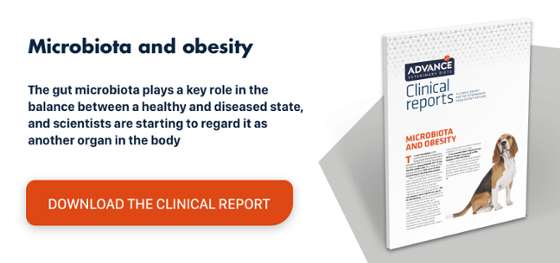Castration of male dogs: calcium chloride combined with dimethylsulfoxide
Surgical means of castrating male dogs have several disadvantages. Not only does surgery expose patients to the possible side effects of anaesthesia, but patients also require more time to recover after the operation. Surgical castration is also more invasive, irreversible and more expensive, which is why many owners are reluctant to use this option. Hence, new methods of chemical sterilisation, which are faster, safer and more effective, are being studied. One such substance is calcium chloride (CaCl2).
Calcium chloride as a chemical sterilisation agent
The first studies into the use of CaCl2 as an alternative for sterilising animals were published by Koger L.M.1 at the end of the 1970s. The procedure was practically forgotten until Indian researchers reexamined it and highlighted its efficacy, thus interest in CaCl2 has resurfaced over the last decade.
CaCl2 is injected directly into both testicles while the dog is sedated. Research published in Contraception2 revealed that it causes total necrosis of testicular tissue, as well as fibrosis and hyalinisation in seminiferous tubules and interstitial spaces.
Two studies by Leoci R. et al.3,4, that followed a group of dogs for 9 and 12 months, revealed that sterilisation with CaCl2 was effective, although the authors noted that saline solution does not appear to provide permanent sterilisation. Intratesticular injections of low concentrations of CaCl2 in saline solution resulted in fewer side effects, but testosterone levels returned to baseline values after 12 months.
Nevertheless, the use of a 20% solution of CaCl2 in 95% ethanol, administered via a single bilateral intratesticular injection, achieved azoospermia. Serum testosterone also dropped significantly after intratesticular treatment with CaCl2, and no side effects were observed; consequently, the researchers concluded it is an effective alternative treatment for the castration of male dogs.
Using calcium chloride with dimethylsulfoxide to castrate male dogs
Another study developed by Silva R.C.A.5 assessed the intratesticular injection of CaCl2 combined with dimethylsulfoxide as a method of chemical sterilisation in dogs. They divided 12 dogs into two groups: one was treated with 15 mg/kg of 7.5% CaCl2, injected into each testicle in a solution combined with 0.5% DMSO, and the control group received the same volume/kg of sodium chloride (NaCl) solution but at 0.9%.
The researchers analysed semen characteristics before and after treatment, as well as serum testosterone levels before and 15, 30 and 60 days after the injection. They also followed up on local pain and, after the orchiectomy, performed testicular histology.
Only one dog manifested pain upon testicular palpation. Five of the six treated dogs presented azoospermia after 15 days, while the other dog developed it after 30 days. There were no significant differences in testosterone concentrations in the treated group, but histology revealed degenerative testicular lesions, especially in the proximal and middle areas. The authors therefore concluded that an injection of 7.5% CaCl2 combined with 0.5% dimethylsulfoxide is also a viable alternative for canine sterilisation.
In any event, it is important to bear in mind that one of the main negative consequences of sterilisation in dogs is weight gain, a risk factor for the onset of multiple diseases. So, it is advisable to include dietary changes, such as Weight Balance, which provides high-quality protein and essential fatty acids without adding too many calories.

